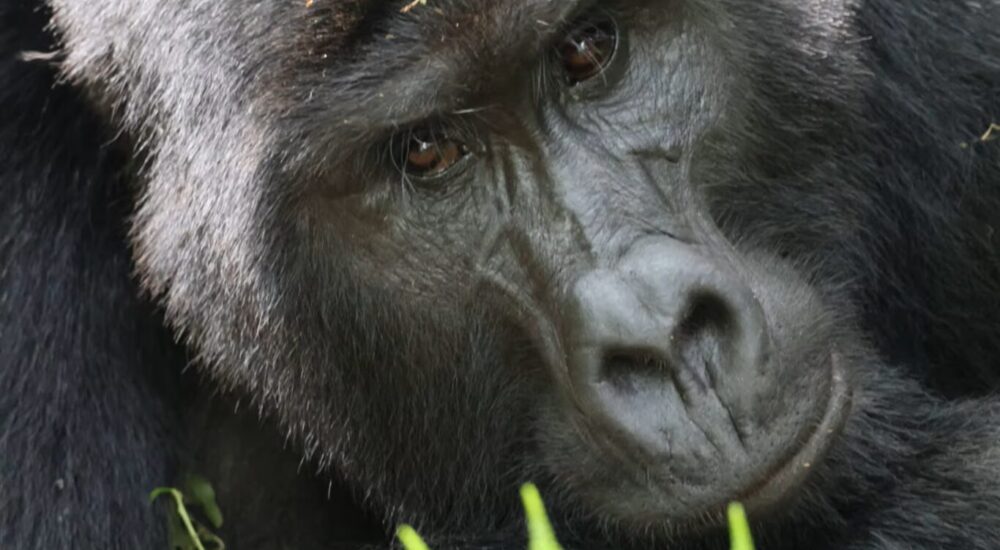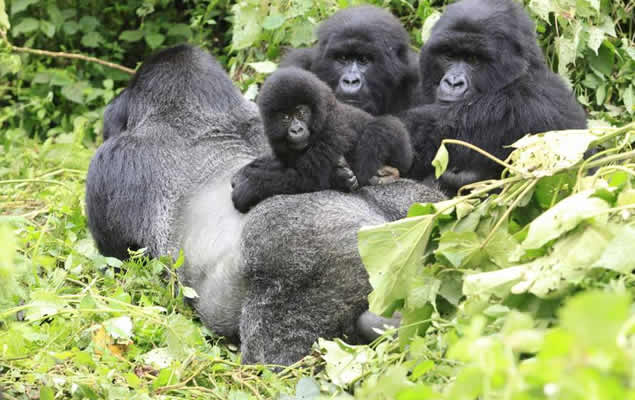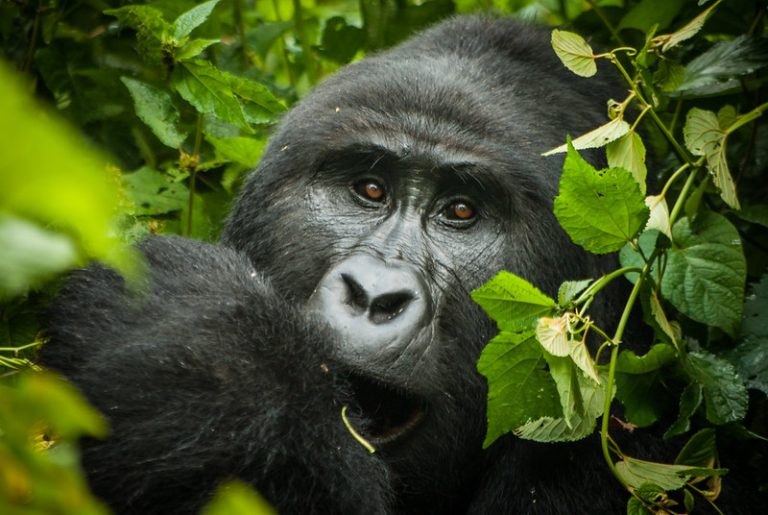What is Gorilla Trekking? Best Destinations for Family-Friendly Gorilla Trekking Preparing for Your Gorilla…
Salonga National Park
Salonga National Park, located in the middle basin south of the Congo River, is Africa’s biggest tropical rainforest protected area. The Salonga national park, which spans 3600 square kilometers and is managed by the Institut congolais pour la Conservation de la Nature (ICCN), spans the provinces of Mai Ndombe, Equateur, Kasai, and Sankuru. Salonga National Park, which is located there, is accessible by boat thanks to the Congo River and other minor rivers like the Lokoro River, which runs through the park’s middle and northern portion, and the Lula River in the south.
Salonga National Park is one of Africa’s largest and best-known parks, home to a diverse range of animals. The park is separated into sections that follow parallel river terraces with a southeast-to-northwest trend and high plateaus covered in dry woods, each of which has a unique flora. These are the northern and southern blocks.
The northern section is located between the Lomela and Loile rivers. It expands to higher terrain in the east with deeper valleys and rivers flowing below cliffs from meandering valleys with marshy sides in the west. Clayey sands make comprise the lower western valleys of the park’s southern block, which stretches between the Luilaka and Lula rivers.
Salonga National Park is a natural resource located midway between Kinshasa, the country’s capital, and Kisangani. It is home to 40% of the world’s bonobos and is one of the few remaining unspoiled tropical woods. There are various primary vegetation types of tropical rain forest in the park’s north, as well as semi-deciduous forest along the rivers.
Some of the plant species found in the park’s semi-deciduous woodland are Staudtia stipitata, Polyalthia suavaeolens, Scorodophloeus zenkeri, Anonidium mannii, and Parinari Glaberrium. Flooding is a threat to the forest species Oubanguia Africana, Scytopetalum pierrianum, and Guibourtia demeuse. Swamp forest species include Entandophragma palustre, Coelocaryon botryoides, and Symphonia globulifera, among many more.
wildlife at Salonga national park
Salonga National Park, a UNESCO World Heritage Site, has Masai rivers, streams, marshes, and peculiar grasslands known as bias. The park also has a diverse range of rare creatures, including 51 mammal species, about 129 fish species, and 223 bird species. One of the species present in the park’s northern, northeastern, and southeast boundaries is the bonobo, a kind of pygmy chimp unique to the Democratic Republic of the Congo.
Angolan cusimanse (mongoose), African forest buffalo, leopard, spotted necked otter, forest and savannah elephants, giant ground pangolins, blue duiker, yellow backed duiker, water chevrotain, western bongo, hippopotamus, Okapi, bush back, bongo, long tailed pangolin, and many others are among the mammals. Mangabeys, red-tailed monkeys, Alens Swampy monkeys, mona monkeys, and dwarf bush baby dryad monkeys are among the primates found in the park.
Salonga National Park has been home to 153 bird species, including the cattle egret, migratory black stork, and yellow-billed stork. The Congo pea flow, the African grey parrot, the black-bellied bustard, and many more are all endangered. The Bonobo, which account for 40% of the global population and are genetically similar to humans in 98.7% of cases, are famous for inhabiting Salonga National Park. Bonobos are smaller, leaner, and darker in comparison to chimps.
Safari activities at Salonga national park
Bird Watching: The tropical forests of Salonga National Park are a haven for birds, and you can expect to see over 300 different species while bird watching there, including the black-bellied bustard, Congo peacock, yellow-billed storks, palm-nut vultures, cattle egrets, grey parrots, and more.
The wildlife viewing safari in Salonga National Park is very captivating as you come across numerous animals such as Congo water civets, Allen’s swamp mangabeys, dwarf bush babies, Bonobos, elephants, sitatungas, Potto monkeys, wolf monkeys, duikers, pygmy camp buffaloes, white rhinos, Thollon red Colobus, and Angolan mongooses while taking in the breathtaking scenery.
A guided nature trip through the park’s woods and marshes is another exciting safari activity for observing animals in Salonga National Park. During guided nature walks, you will encounter elephants, golden cats, leopards, golden billed mangabeys, dwarf bush babies, and other species.
Fishing: Over 400 different kinds of fish have been caught when fishing in the Salonga National Park’s several rivers, including the Luilaka, Lula, Lomela, and Loile.
Cultural interactions: The Salonga National Park is surrounded by the Iyalima tribe. In these locations, you may immerse yourself in their vibrant, out-of-the-ordinary culture and way of life, which includes sampling locally made food, traditional music, dances, and storytelling.
Hunting is one of the finest ways to experience the natural beauty and remoteness of Salanga National Park. The hunt is carried out in a group with an armed ranger, and many animals are chased.
Tthe best time to visit Salonga national park
The dry months of June through August are ideal for a safari in Salonga National Park for a memorable safari experience. There are no floods in the park during these months because of the low rainfall, and the plant cover is not extremely dense.
Salonga National Park is accessible by domestic chartered aircraft from Monkoto, Anga, and Mundja. It is located between Kisangani and Kinshasa, 100 km south of Boende.


